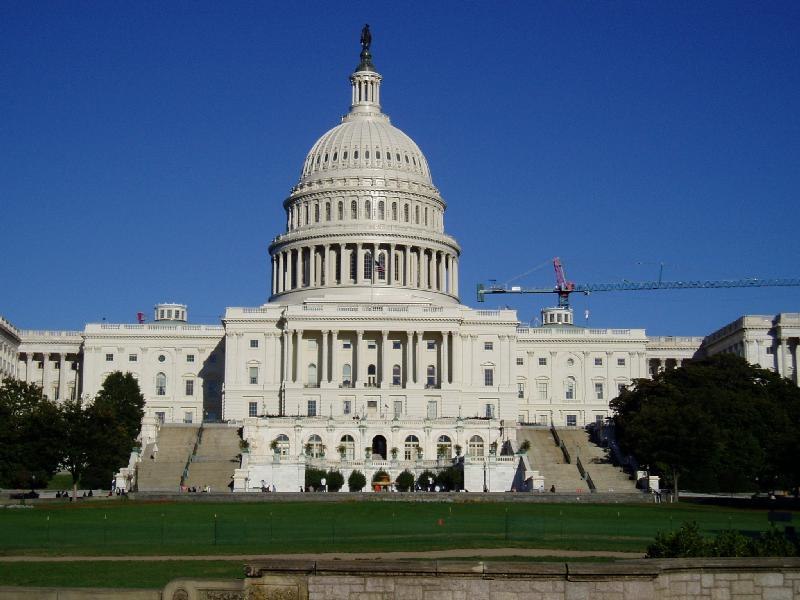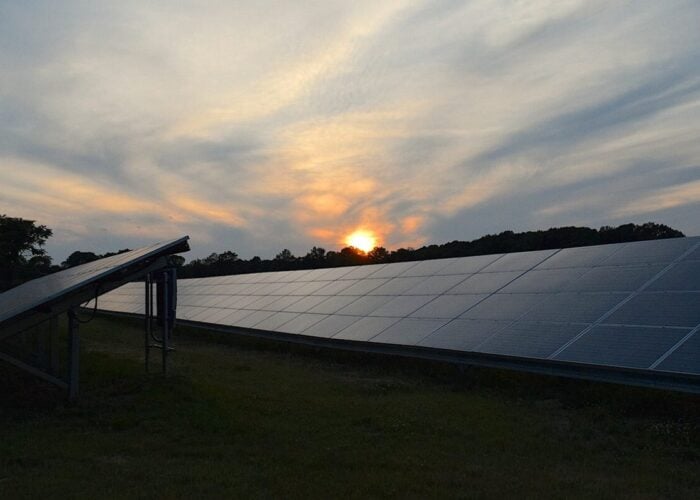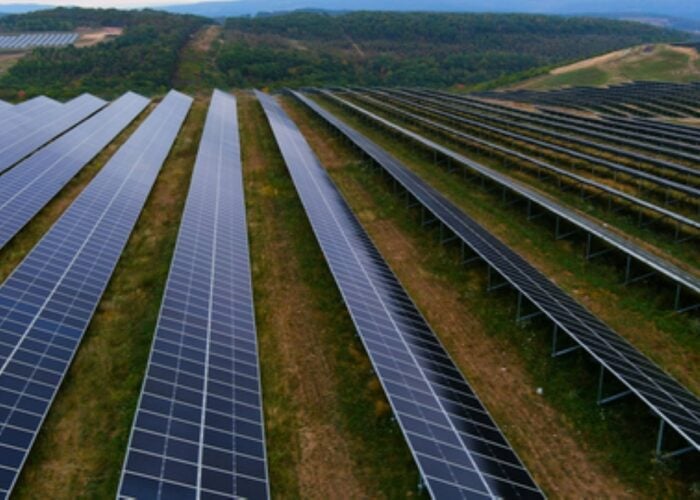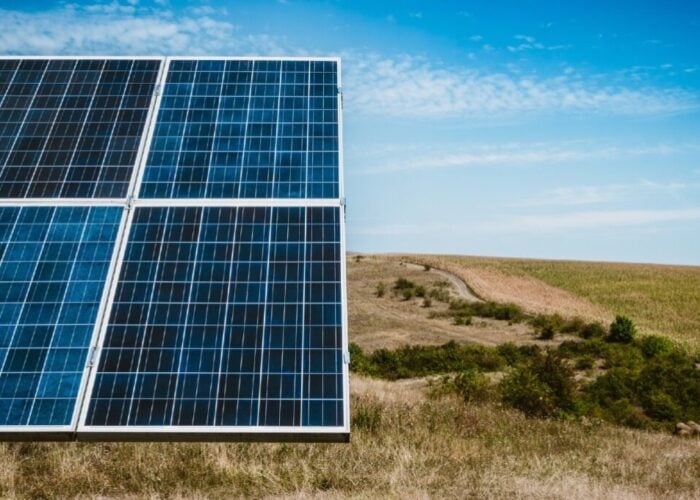
Part one of PV Tech’s series of articles recapping 2019, covering the first three months of the year, can be found here.
Part two of PV Tech’s series of articles recapping 2019, covering April – June, can be found here.
Try Premium for just $1
- Full premium access for the first month at only $1
- Converts to an annual rate after 30 days unless cancelled
- Cancel anytime during the trial period
Premium Benefits
- Expert industry analysis and interviews
- Digital access to PV Tech Power journal
- Exclusive event discounts
Or get the full Premium subscription right away
Or continue reading this article for free
Part three of PV Tech's series of articles recapping 2019, covering, July – September, can be found here.
Bifacial tariff ping-pong; no dice for ITC extension
President Donald Trump’s administration outraged industry in early October when it unveiled a plan to axe a loophole in the much-maligned Section 201 tariffs that exempted bifacial modules.
The government’s initiative to expand its protectionist policy was thwarted within weeks by a temporary court block on the measure brought by a coalition of plaintiffs that included Solar Energies Industries Association (SEIA) and renewables developer Invenergy.
In December, the US Court of International Trade ruled in favour of industry, ordering the administration to halt the controversial levy.
Trade wars and geopolitics are unlikely to dent the industry's enthusiasm for bifacial technology. Bloomberg NEF analyst Jenny Chase told PV Tech in October that the firm expects the technology to power “almost all utility-scale plants” by the early 2020s.
Meanwhile international developer Lightsource BP told Solar Media's editor Liam Stoker in December that it will prioritise bifacial technology for “most, if not all” of its 12GW pipeline, seeing “particular potential” for the modules in the US.
In December, the SEIA published a scathing analysis of the “devastating harm” wrought by Trump's solar import tariffs. The group claimed the trade war had cost the US 62,000 jobs, 10.5GW in collapsed installations and US$10.5 billion in lost economic activity.
Meanwhile, a seperate SEIA-fronted battle was less fruitful. After an unsuccessful year-long lobby to stop the federal solar investment tax credit's (ITC's) tapering on 1 January 2020, the SEIA pledged in December to continue the fight next year. The ITC will fall to 26% next month, degressing further to 22% in 2021. It will drop to just 10% for utility- and commercial-scale projects in 2022 and residential projects will receive no subsidy. Savvy developers and installers, like 7X Energy and SunPower, started stockpiling equipment in advance of the deadline.
The bullish hour of European subsidy-free solar
It was a different story across the Atlantic. Subsidy-free solar rallied across Europe in the final quarter of 2019, making strides in states previously deemed too cloudy, northerly or politically unstable.
Spain’s subsidy-free pipeline gathered steam, thanks in part to PPAs backed by the likes of Audax Renovables.
Less than a fortnight after its snap election in November, Spain’s new government offered investors subsidies in return for dropping lawsuits sparked by the controversial retroactive FiT cuts instated by previous governments. The move was broadly welcomed by a Spanish PV industry scalded by years of policy uncertainty.
A flurry of free-market solar deals helped shake Italy from its long-time solar paralysis. Utility A2A acquired an unsubsidised 1GW Italian solar pipeline from China’s Talesun, Octopus Renewables powered up 70MW of PPA-backed projects in Sardinia and Italian developer Solar Ventures teamed up with private equity firm Zouk Capital to build a portfolio of unsubsidised solar, starting with an initial push of about 120MWp.
Europe’s bullish solar frontrunner Germany set a new 98GW-by-2030 renewables goal while debate raged whether the nation needs clean energy subsidies at all. Despite the cabinet’s decision to axe a previously-agreed subsidy cap, a string of PV projects, including EnBW’s 180MW venture, pushed on without government support.
Subsidy-free momentum swept to northern Europe, too. Cost drops in Denmark’s technology-neutral auction prompted the government to announce in early December that solar would soon be ready for the free market.
Despite an increase in PV installations, numbers fall drastically short
Ahead of world leaders and industry convening in Madrid for the COP25 climate conference in early December, world authorities issued a series of stark warnings that delivered an unanimous verdict that a dramatic ramp-up in renewables action is necessary to prevent climate disaster.
The International Renewable Energy Agency (IRENA) released an report in mid-November that said solar capacity must balloon from 480GW in 2019, to 2.8TW in 2030 and 8.519TW in 2050 to ward off the worst of global heating. According to the group, reaching the 2050 target requires annual solar roll-out rates to speed up from 94GW in 2018 to 372GW per year.
Two days later, a report by the International Energy Agency warned that the world needed a “laser-like focus” to bring down global emissions, and that acceleration in global solar PV installations is “essential.” It noted that it would take 200 years at 2018’s annual solar deployment rate of 100GW to reach the scale of current global electricity demand.
For its part, the United Nations Environment Programme estimated the same month that renewables growth needed to multiplied six-fold if climate charge targets were to be met. Sticking to status-quo policies would push the planet towards a 3.2°C temperature rise by 2100 above pre-industrial levels and wreak “even more destructive” climate impacts, according to the agency’s Emissions Gap Report.
At COP25, the EU responded to groups' warnings with a new plan to slash greenhouse gas emissions, the European Green Deal. The plan includes pledges to introduce a 'green industrial strategy' and to cut bloc-wide GHG emissions to 50-55%, up from the previous 40% target.
The latter promise would doubtless have been welcomed by the group of renewables majors who published an open letter just weeks before urging the EU for more ambitious targets and more stringent policy support.
Meanwhile, IRENA and UNEP pledged to help countries embark on a “massive and immediate” scale-up of green energy efforts by advising them on how to adjust the national climate pledges – or Nationally Determined Contributions (NDCs) – they set out under the 2015 Paris Agreement. Existing NDCs fail to reflect that renewables are growing faster than expected, according to IRENA, and the world’s top economies, in particular India, China and the US, need to be mroe ambitious.
Africa's solar bonanza
Development financiers threw their weight behind utility-scale public-private-parternship PV projects in northern Africa in the latter months of 2019, while a combination of public and private actors in South Africa, Zambia and Zimbabwe turned to solar to take the sting out of unprecendented energy crises and blackouts.
The African Development Bank’s (AfDB) ‘Desert to Power’ initiative, which aims to install 10GW of solar projects across the Sahel, entered its adolescence after being endorsed by Sahel state leaders. The programme furnished an €18 million loan to a 32MW solar-plus-storage public-private-partnership project in Chad and loaned €48.82m to the government of Burkina Faso develop 208MWp of PV.
Meanwhile, the World Bank extended its ‘Scaling Solar’ programme to Côte d’Ivoire when it agreed to finance a 60MW project duo. The Sustainable Energy Fund for Africa, administered by the AfDB, agreed to invest just shy of US$1 million in a 9MW solar-hydro hybrid project in Burundi.
In sub-Saharan Africa, countries turned to solar to wean themselves off thermal ageing power plants and an overreliance on hydro plants deibilitated by erratic weather, drought and floods.
In Zambia, where climate-driven droughts have debilitated the country’s hydro plants for much of the year, the African Development Bank (AfDB) and Green Climate Fund (GCF) unveiled a plan to deploy 100MW of green energy, mostly small-scale solar in late November. Zimbabwe turned to the United Arab Emirates for backing to unroll a 2GW solar portfolio nationally.
But South Africa saw its worst ever energy crisis in early December, with sole power utility Eskom instituting an unprecedented ‘Stage 6’ load-shedding schedule. That prompted industry calls for government to cut regulatory red tape stalling distributing small-scale PV.






